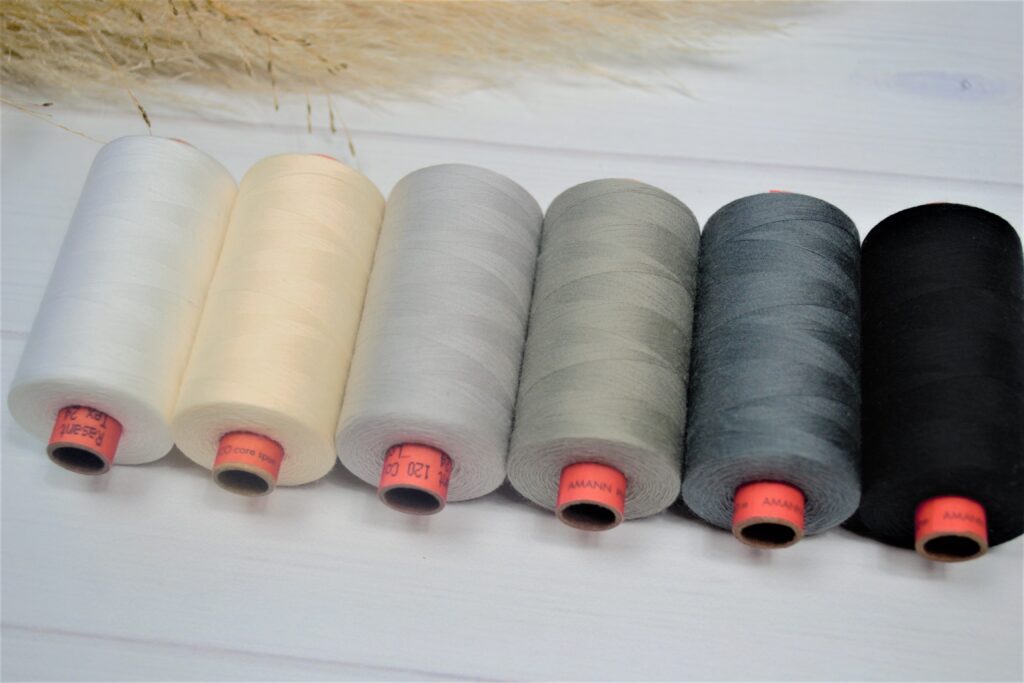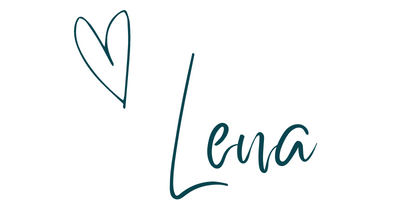
Different Types of Sewing Thread
Selecting the best sewing thread for your project can depend on many things.
It could depend on the weight, fabric type, brand, versatility, thickness, sheen, durability, and others. So how do you select which one is suitable?
Like with any other product you first need to understand the details. What is the composition? What is it good for? What is the variety? In this post, I will tackle the different fibre types of sewing thread.
In another post I will dive deep into the different thread weights and explain why you should use different weights for different projects.
Thread fiber
The thread fiber sets the texture and appearance of your project. Below are the types of fiber you may encounter:
Cotton thread
Cotton thread will be soft to the touch and will have a flat appearance. However, it is a strong and versatile fiber. You can see this in most cotton garments because it can adjust to fabric changes like coloring or shrinkage. There are subtypes of cotton thread as well.

- Soft cotton – which is common on home projects. It tends to shrink when washed
- Mercerized cotton – tends to be in bright color and stronger composition because it is finished with a specific water solution
- Glazed cotton – regular cotton thread with extra coating to make it stiff and resistant
Polyester thread
Polyester thread is a synthetic fiber alternate to cotton.
It has a strong stretch and tends to have more sheen. The reason why it is a common alternative to cotton is that it does not shrink nor fade no matter how often it gets washed. It also does not cost too much.
Silk thread
Silk thread is naturally very strong, so it usually is widely used in the clothing industry. It tends to be more on the expensive side, however it will last much longer than other threads, so sometimes spending the extra money upfront is definitely worth it.
Nylon thread
Nylon thread is a stronger material than polyester. However, it melts when exposed to direct heat. So ironing clothes will not yield a good result.
This synthetic thread is ideal when transparency is needed. It can stretch extensively and is mostly sewn with knitted fabrics.
Linen thread
Linen thread is one of the earliest threads used in the industry. For a time, linen thread was the primary thread seen on the market and used for garment sewing.
Compared to other threads, linen thread may not have enough strength to last. However, you can still sometimes see linen thread used in bedsheets and lace.
Viscose thread
Viscose thread is usually seen in bright colors and is an absolute all-rounder.
It probably falls into the mid range when it comes to strength. And because of its flexibility and color tone, it can work well with intricate designs but is also much better suited to dense fabrics than polyester thread.
Sewing machines can easily process viscose threads because it does not cause much friction and does not leave residues.
Metallic thread
Metallic thread is made from a very thin strip of metal like aluminum, gold, or silver. This fine metal strip is glued between the layers of synthetic fibre to solidify the sheen. This type of thread can be seen as an embellishment or part of embroidery as it can add noticeable decor and appeal to the sewn project.
Many providers employ various techniques to produce metallic thread but they generally come out the same.
Rayon thread
Rayon thread is a lightweight, semi-synthetic thread that has its advantages and disadvantages.
It is produced in bright colors, has a high sheen but it is not as strong as polyester. Because of its natural finish like silk, it makes it ideal for embroidery.
What’s good about rayon thread is that it is stronger than silk and also less expensive.
Variegated thread
Variegated thread is not necessarily a specific fibre of thread but it has its own character that attracts many.
These threads are known for having multiple colored patterns throughout the spool. It could either be a toned blend or contrast. The toned blend has multiple shades of 1 color. And the contrasting blend is a mix of tone and its contrast color. When this thread is in use, it will show a gradient effect.
Thread tension
Thread tension can be measured by putting pressure on one side of the spring where the thread passes through the tension disks.
When you expose the thread to this, you can mechanically adjust the tension.
If you put too much tension on the thread, you can damage it and the thread can break.
If the tension is too loose, the thread will not adhere properly to the fabric and it will just create loops. So when you change threads, you also need to consider the necessary adjustments of pressure.
Thread brands
The market certainly offers a wide variety of threads. And below I’ll only mention a few of the most popular ones. I currently carry Gutermann and Rasant thread in my store and am waiting on my first delivery of Aurifil, which I will list in the shop this week.
Please let me know if you would like to see any other brands, such as Mettler for instance.
Gütermann
Gütermann is one of the most reliable and available brands when it comes to sewing.
Gutermann is a traditional producer of threads worldwide, maintaining great quality and versatility.
The Gütermann brand provides a huge selection of sewing thread, be it polyester, metallic, cotton, or general sew-all. It is definitely an ideal thread for machine use or hand sewing and I personally use it all the time, my machine loves it 🙂
Rasant
Being one of the most renowned thread brands worldwide, Rasant has exemplified consistency and durability in its thread products.
The composition of their thread generally has polyester at the core, wrapped in cotton. This gives it tensile strength while maintaining a soft and smooth feel on the outer layer.

To sum it up
Now that we have tackled the different components and variety of threads, it is up to you to decide which is the most beneficial to use. I think it depends on the project and quality that you want to achieve. Thread selection can be overwhelming given the wide range and brands available in the market. But at its core, it will revolve around the basic fundamentals of weight, type, durability, thickness, and color.
At the end of the day, what is important is you get the quality that you are aiming for in your project. Sometimes, the wrong thread can throw off what you have. Or worse, the outcome may not last or live up to your expectations. Thus, it is always important to do your research and do trial and error where necessary so that you can ensure that you have the right material.
If you are unsure where to start or you are after a type or brand of thread I currently do not offer, please do send me a message and I will do my best to make it available in my shop 🙂
Let me know in the comments section below what thread you like to use and why.

All threads I currently carry can be found here: https://twoinstitches.com/product-category/thread/

